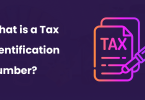Unlocking the Essence of Assets
In the vast tapestry of finance, assets stand as the cornerstone, representing economic value that individuals, corporations, or entire countries wield. This comprehensive guide endeavors to unravel the complexities surrounding assets, exploring their classifications, types, and the pivotal role they play in shaping financial landscapes.

Decoding Assets: A Fundamental Definition
At its core, an asset is a resource imbued with economic value, owned or controlled by an entity with the anticipation of future benefits. Whether in the hands of an individual, a corporation, or a nation, assets manifest in various forms and are instrumental in augmenting value or fortifying operational capabilities.
The reporting hub for assets is a company’s balance sheet, where they are classified into current, fixed, financial, and intangible categories. These assets, be they tangible or intangible, are procured or created with the overarching objective of enhancing a firm’s value or bolstering its operational capacities.
Unveiling the Dynamics: Understanding Assets
The Essence of an Asset
An asset is more than a mere possession; it symbolizes an economic resource owned or controlled by a company. This economic resource, often scarce, holds the potential to generate cash inflows, reduce expenses, or, in a broader sense, improve sales. It extends beyond mere ownership, encapsulating the right or access to resources that may be legally enforceable.
For a company to rightfully claim an asset, it must hold a legal right to it as of the date of the company’s financial statements. This underscores the importance of legitimacy and ownership rights in the realm of assets.
Asset Categories Demystified
Assets, spanning a spectrum of characteristics, are broadly categorized into:
1. Current Assets
These are short-term economic resources expected to be converted into cash or consumed within a year. Examples include cash and cash equivalents, accounts receivable, inventory, and prepaid expenses. While cash is straightforward to value, periodic reassessment is essential for items like inventory and accounts receivable to account for potential impairment.
2. Fixed Assets
Fixed assets, with a lifespan exceeding a year, encompass resources such as plants, equipment, and buildings. The process of depreciation is applied to fixed assets to allocate their cost over time. This accounting adjustment reflects the aging of assets, and methods like straight-line and accelerated depreciation are accepted under generally accepted accounting principles (GAAP).
3. Financial Assets
Financial assets manifest as investments in the assets and securities of other institutions. Stocks, bonds, preferred equity, and various hybrid securities fall under this category. Valuation of financial assets is influenced by the underlying security and market supply and demand dynamics.
4. Intangible Assets
These assets lack a physical presence but hold significant economic value. Examples include patents, trademarks, copyrights, and goodwill. Intangible assets undergo either amortization or annual impairment testing, depending on their nature.
The Consideration of Assets in Real-Life Scenarios
What Is Considered an Asset?
In essence, anything with economic value owned or controlled by an individual or company qualifies as an asset. This spans a spectrum from a tangible $10 bill, a home, or a car to intangible assets like intellectual property, contractual obligations, royalties, and goodwill. Even a loan becomes an asset for the lender, representing an amount owed.
Examples of Assets
Personal assets encompass a wide array, including homes, financial securities, jewelry, and artwork. Business assets, on the other hand, may include motor vehicles, buildings, machinery, cash, and accounts receivable. These examples highlight the diversity of assets across personal and corporate domains.
Non-Physical Assets: Unlocking Value Beyond the Tangible
Non-physical or intangible assets, while lacking a tangible form, wield economic influence. Intellectual property like patents or trademarks, contractual obligations, royalties, goodwill, brand equity, and reputation fall under this category. These assets, though intangible, can be remarkably valuable.
Labor: Distinguishing Between Assets and Work
Labor, the work carried out by humans, stands apart from assets. While labor results in wages or a salary, it doesn’t fall under the category of assets, which are considered capital. Assets, in contrast, represent owned or controlled resources with economic value.
Current Assets vs. Fixed (Noncurrent) Assets
Accounting principles segregate assets based on their time horizon of use. Current assets are anticipated to be sold or used within a year, including items like cash, accounts receivable, and inventory. Fixed assets, also known as noncurrent assets, are expected to be in use for more than a year and undergo depreciation. Unlike current assets, fixed assets are not easily liquidated.
Technological Trends in the Asset Landscape
As we traverse the digital age, technology casts a transformative influence on traditional asset management practices. The integration of cutting-edge trends reshapes how assets are safeguarded, managed, and leveraged for future benefits.
Technological Trends Impacting Asset Management
Blockchain and Distributed Ledger Technology (DLT): These technologies bring transparency and decentralization to asset management. Streamlining processes and enhancing security, they establish a tamper-proof record of asset ownership.
Digital Vaults and Encryption: Advanced encryption fortifies digital vaults, offering secure storage for sensitive documents and digital assets. This evolution from traditional safe-deposit boxes introduces efficiency and heightened security.
Biometric Authentication: Heightening security measures, biometric authentication mechanisms like fingerprint scans and facial recognition restrict access to authorized individuals, safeguarding digital and physical assets.
Smart Contracts: Powered by blockchain, smart contracts automate asset management processes. These self-executing contracts facilitate seamless transfers, trigger predefined events, and enhance overall operational efficiency.
Future Trajectories in Asset Management
Integration of Artificial Intelligence (AI): AI algorithms contribute to risk assessment, fraud detection, and proactive monitoring of asset management processes. Machine learning capabilities adapt to evolving threats, fortifying security infrastructures.
Decentralized Finance (DeFi): DeFi introduces decentralized alternatives to traditional asset management services. Utilizing blockchain and smart contracts, it redefines how individuals manage and exchange assets without relying on centralized intermediaries.
Cybersecurity Innovations: With cyber threats becoming more sophisticated, continuous innovations in cybersecurity are imperative. Robust cybersecurity measures are essential to protect digital and physical assets from emerging risks.
Navigating the Future of Asset Management
In conclusion, assets represent the bedrock of economic value, transcending physical boundaries to encompass a diverse array of resources. From tangible properties to intangible intellectual assets, the concept of assets evolves with the dynamism of the financial landscape.
As technology continues to weave itself into the fabric of asset management, embracing these trends becomes imperative for individuals, businesses, and institutions alike. The future promises a seamless integration of traditional and technological practices, ensuring that assets, whether tangible or intangible, remain secure, accessible, and potent contributors to economic growth and prosperity. Staying informed about these technological shifts is not merely an option but a strategic necessity for anyone navigating the intricate world of assets in the modern era.






